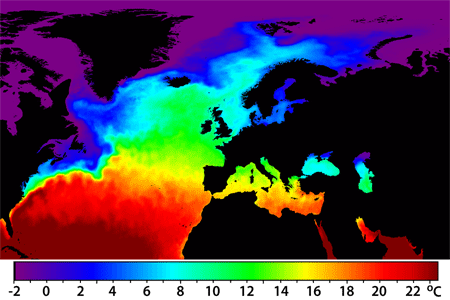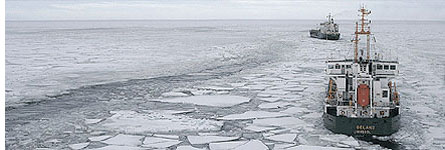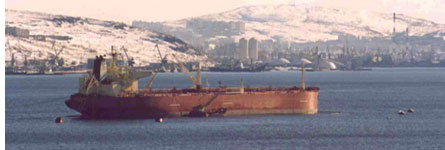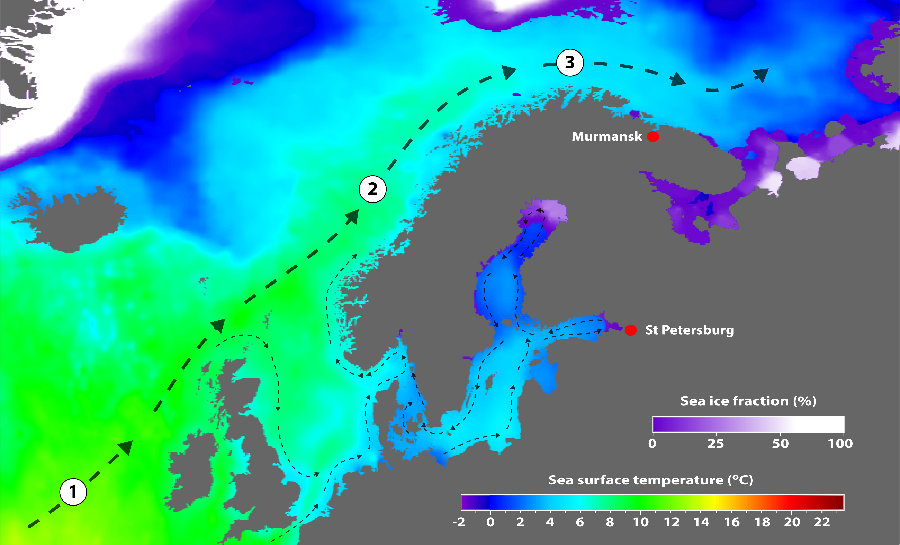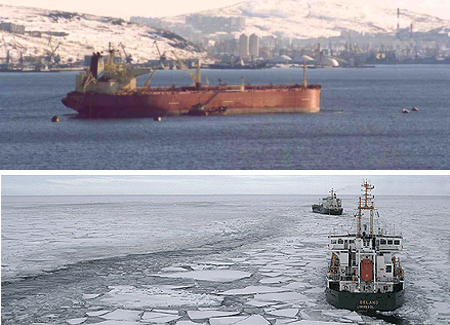3. De mondiale transportband
Inleiding
The ocean helps shape climate around the world. Ocean currents transport heat from equator towards the poles, releasing heat to the atmosphere along the way. Warm currents also release moisture to the air, and influence regional rainfall patterns.
Chapter 2 looked at the surface currents. In this chapter we look at the vertical circulation.
Vertical circulation is driven by cold, salty water sinking at high latitudes and returning towards the equator in the deep ocean. This water is replaced by warm water moving towards to poles at the surface.
This vertical overturning acts like a conveyor belt, transporting heat from the tropics to high latitudes. It is the subject of this chapter.
Why is the Arctic port of Murmansk ice free all year?
Murmansk in the Arctic (top) and the Baltic ports near St. Petersburg (bottom) are both important for Russian access to the Atlantic. Despite St. Petersburg being much further south, it is surrounded by ice for a month or more each year, while Murmansk is always ice free.
Can you explain why?
- hoe verschillen in zoutgehalte en temperatuur de THC op gang houden
- de rol van de transportband in het klimaatsysteem
- hoe de transportband beïnvloed kan worden door de mondiale opwarming.
